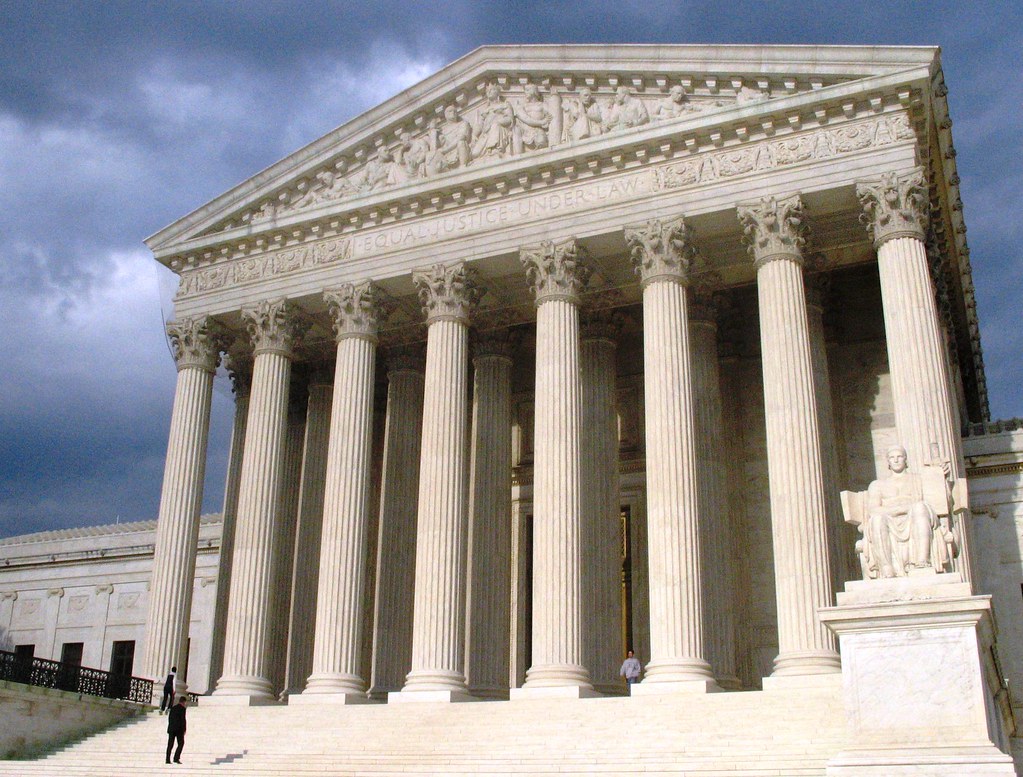Key Takeaways:
- Supreme Court cleared the way for ICE “roving” patrols in Southern California.
- Justice Kavanaugh said people can sue if agents use excessive force.
- Experts say suing federal officers is nearly impossible under recent rulings.
- A lower court’s order to end stops based on ethnicity is on hold.
- Critics warn this decision could lead to more racial profiling.
Is the Supreme Court allowing racial profiling?
The Supreme Court surprised many this week. It approved Immigration and Customs Enforcement agents to keep doing “roving” patrols near the U.S.–Mexico border. These patrols let agents stop people based on where they are or how they look. Simply put, if someone seems to speak Spanish or appears Latino, an officer can pull them over. This practice raises big concerns about racial profiling.
Justice Kavanaugh’s opinion
Justice Brett Kavanaugh wrote a ten-page concurrence supporting the court’s decision. He said that if an officer uses too much force, the Fourth Amendment bans it. He added, “remedies should be available in federal court.” In other words, he thinks people can file a lawsuit if an agent hurts them.
However, legal experts see a problem. Recent Supreme Court decisions have made it extremely hard to sue federal officers for excessive force. In those cases, Kavanaugh joined the conservative majority. So, while his words sound promising, they may not help most victims.
Why this ruling matters for racial profiling
By pausing a ruling that banned stops based on ethnicity or language, the Supreme Court let ICE keep targeting Latino workers. A federal judge had said agents couldn’t stop people at day labor sites just because they looked or sounded Hispanic. Now that order is on hold while lower courts sort it out.
Justice Sonia Sotomayor called this a threat to the Fourth Amendment. She wrote that the decision “has all but declared that all Latinos, U.S. citizens or not, who work low wage jobs are fair game.” She warned it could mean anyone who seems Hispanic can be stopped at any time.
Legal experts sound the alarm
Patrick Jaicomo, a senior attorney at the Institute for Justice, said, “It’s bordering on impossible to get any sort of remedy in a federal court when a federal officer violates federal rights.” He pointed out that the Supreme Court has closed nearly every path to sue for excessive force.
Lauren Bonds of the National Police Accountability Project agreed. She noted that term after term, the court has limited people’s ability to challenge federal officers. In her view, Kavanaugh’s concurrence offered little real help.
University of Chicago law professor William Baude questioned what real remedies Kavanaugh had in mind. On social media, he asked, “What remedies does Justice Kavanaugh believe are and should be available?” His point: Kavanaugh did not explain how someone would win a case.
On the other hand, Richard Re, who clerked for Kavanaugh, offered a different view. He said the Justice might be hinting at future changes. Re noted that an ambiguous phrase could be deliberate. He thinks Kavanaugh could want to revive stronger Fourth Amendment protection in later cases.
What comes next?
The Supreme Court’s pause is only temporary. The case returns to lower courts, which must decide if ICE’s patrols violate the Constitution. Those judges will weigh evidence about how agents pick who to stop. Their rulings could take months or even years.
Meanwhile, civil rights groups plan to keep fighting. They aim to show these patrols break the ban on unreasonable searches and seizures. At the same time, lawmakers might craft new rules to stop racial profiling by federal agents.
How this affects communities
For workers near the border, the decision brings worry and confusion. Many fear they can be stopped for no real reason. Families might avoid public spaces to stay safe. Community leaders call for clear guidelines that protect civil rights.
They also urge better training for ICE agents. If officers focus on suspicious behavior instead of looks or language, stops could become fairer. Advocates tell people to know their rights. They suggest staying calm, asking for a lawyer, and recording any abuse. Even if suing is hard, strong evidence and public pressure can still lead to change.
Key terms explained
• Roving patrols: Mobile stops by law enforcement in a wide area, not at fixed checkpoints.
• Fourth Amendment: The part of the U.S. Constitution that bans unreasonable searches and seizures.
• Excessive force: When an officer uses more power than the law allows to control someone.
• Remedy: A legal way to fix a wrong, like money or a court order to stop certain actions.
Conclusion
This week’s ruling has ignited a fierce debate. The Supreme Court majority allowed ICE to continue patrols that critics say invite racial profiling. Justice Kavanaugh pointed to the courts as a solution, but experts doubt those doors are open. As lower courts reopen the case, communities brace for more stops and renewed battles over civil rights.
Frequently Asked Questions
How do ICE roving patrols work?
Agents drive through neighborhoods near the border. They stop vehicles or question people who look or sound like they might be immigrants.
What is the Fourth Amendment?
It’s a part of the U.S. Constitution that protects people from unreasonable searches and seizures by the government.
Can people sue ICE agents for using excessive force?
In theory, yes. But recent Supreme Court rulings have made these lawsuits very difficult to win.
Why did some justices dissent?
Justices Sotomayor, Kagan, and Jackson argued that the decision undermines the Fourth Amendment and allows racial profiling.
What happens next in the case?
Lower courts will decide if ICE’s patrols violate the Constitution. Their decisions could take many months.

